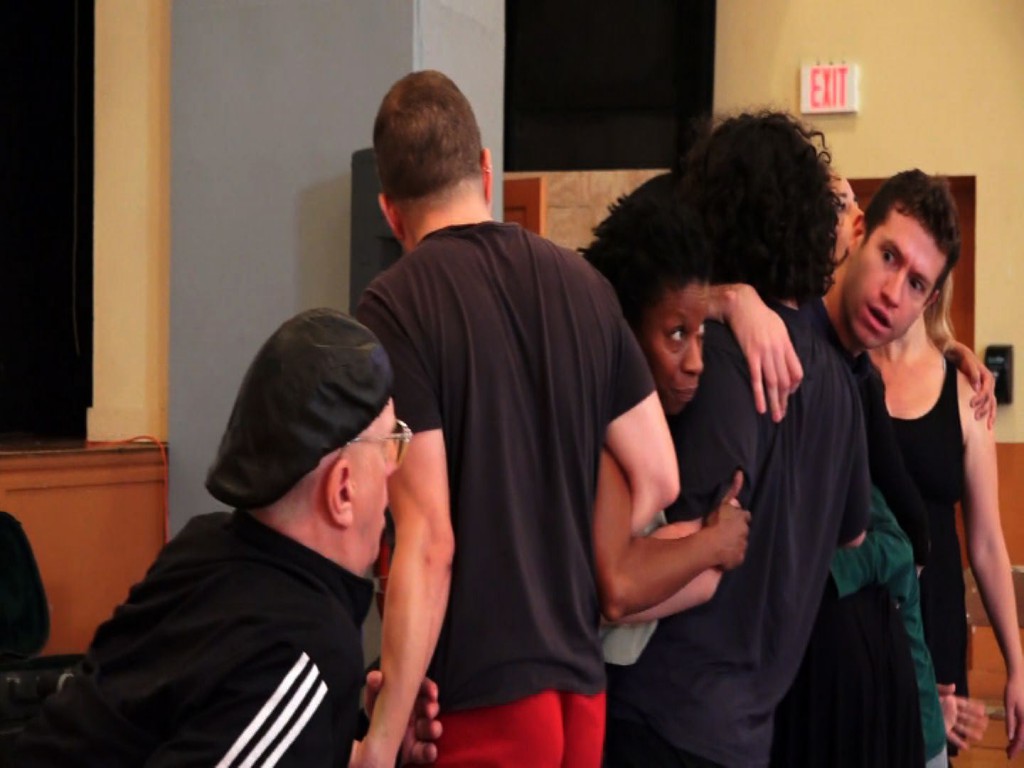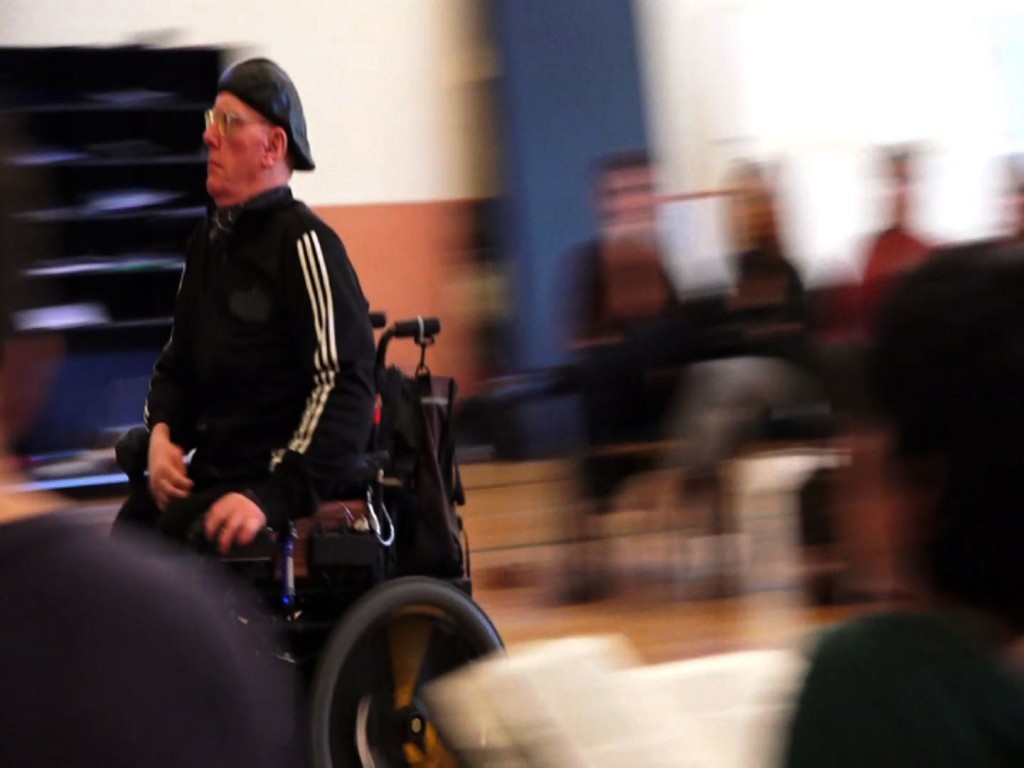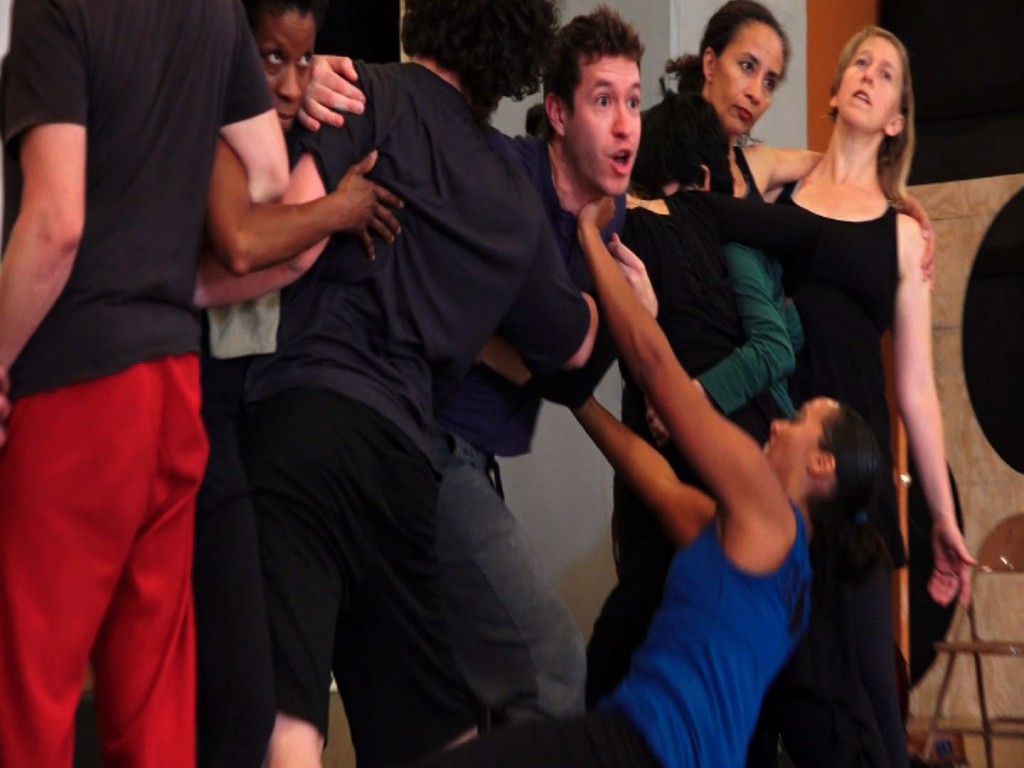When Dance and Theater Meet
BY EMMALY WIEDERHOLT
I recently had the opportunity to sit down with choreographers Eric Kupers and Randee Paufve of Dandelion Dancetheater and Paufve|Dance, and director John Flax and collaborator Kent Kirkpatrick of Theater Grottesco. They are currently in the midst of combining their respective ensembles (and disciplines) into a dance-theater performance entitled “Blessed Unrest.” Transcribed below are some snippets from our discussion on what it means to literally bring together dance and theater.
~~
Because you’re working with several different modes of creative expression (dance, music and theater), what have been some barriers to communication?
Kent: In dramatic form, we talk about propositions. One actor makes a proposition and another responds to it. Eric pointed out that in dance, to simply come onstage is a proposition. In that case, it’s so open-ended there’s really no clear response to it. Instances like these made it clear to us the ways dancers talk and perceive each other versus the way theater people do.
Eric: We got into this discussion of how you say ‘yes’ or ‘no’ to a proposition. In dance improvisation, saying yes can be going in the completely opposite direction than the proposition that was made, in that it provides contrast. Really there are no ‘no’s.’ ‘No’ would be to not be present.
John: The language of theater is much more literal. The classic improvisation rule is, if someone sets up a situation and invites you into it, you wouldn’t walk in and completely deny the situation. It’s ‘yes and…’
For Eric and Randee, are there practices in the world of theater you would like to integrate into your dance practice? And for John and Kent, vice versa?
Eric: The big one for me is just being present. That’s all you have to do onstage. You don’t have to constantly be coming up with ideas. There have been several improvised moments where my impulse is to jump in with all of these ideas, but instead we keep stripping it back… do less, do less… and stay really present. I’ve heard both John and Kent say it many times in rehearsals. I spend so much of my time trying to do the impossible. There are wonderful things about that energy, but for me I’ve gotten stuck in that mode. I keep saying that mantra: do less.
John: What’s been really great about working with Eric and Randee is how quickly and profoundly they can bring movement to the stage that takes the play of the actors at any particular moment into a whole new dimension. It’s really stunning to be around. The movement can be so adaptable as well; Eric might say, ‘My back hurts, I’m going to completely change this.’ And then he comes up with something even better. When my actors and I put together movement, it takes us a lot more time and isn’t nearly as profound and graceful.
Kent: And the movement has meaning. It’s something choreographers and dancers just seem to GET.
Eric: That’s funny, because I don’t lean toward finding meaning until way later in the process. I just create movement based on intuition.
Randee: There was a simple moment last night that interrupted me as a choreographer, and it was really great. I gave a direction, and the actors reacted differently than the dancers; they used their voices. I hadn’t even thought about those possibilities as responses to my direction. It took me into a very different realm and made me realize how the dancers I work with can get locked into a way of working. But I actually feel more differences with Eric. Even though we’re both choreographers, we are on pretty opposite ends of the spectrum when it comes to creating movement. Kent brought up meaning in movement, but each minor change in movement intention has meaning. To me it’s so critical, to the point where I can get bogged down. It’s endless. It’s like word choice. And it’s all meaningful.
Eric: Whereas to me, several similar movements could all mean the same thing; it’s about the energy and quality of the people doing them. I work with such a diverse group of people that everybody can’t physically do the movements the same way.
John: You get different cultures within each theater ensemble too. It has to do with whatever lineage you’re coming from in your art form. The question then is: how do you mash it together with your collaborators? What we’re finding is there are so many ways to juxtapose and crash the movement into whatever story is happening. It creates something unexpected and really exciting.
Dance and theater are different languages with different training mechanisms. How do you navigate the various backgrounds of the performers?
Eric: For me, it’s about getting to know each other over a long period of time. I know now, to certain degrees, how Randee, John and Kent work. I know what kind of work is important to them because we have a working relationship spanning 10 years. But we’re at the beginning of understanding each other, even now. Or, for example, Keith Penney in Dandelion is an accomplished musician who has worked with me for years. He’s learned how to navigate communicating with me about music. We have a joke; when he asks me what key something is in, I say, ‘Kuper’s G minor,’ and he’ll listen and figure out what key it’s actually in. But it took us a long time to get to that point of mutual understanding.
Kent: Our actors are not dancers, so there’s a limitation, but in that limitation is such great stuff. The actors take the choreography and find a fascinating way to do it. You play to the strengths you have, and you recognize your limitations as well. Those limitations are sometimes where the best creativity comes from.
John: When you realize you don’t know what the other people are talking about, you stop and have a discussion. The discussions are incredible rich, because we often don’t even realize the assumptions we make. It’s nice to dig back into one’s own training and aesthetic, and find the intersection with others. Kent and I don’t come from the same training in theater; our trainings overlap to the extent we can understand each other, but there’s still negotiation.
Eric: For me, what’s important is that I respect our differences. I respect each of the collaborators so much.
~~
The final performances of “Blessed Unrest” will be performed in the Bay Area over the next year. The schedule will be posted on www.dandeliondancetheater.org as it becomes available, so stay tuned!
Photos by Craig Hansen



